Attract More Butterflies With Fuzzy Flowers
Updated: Jun. 13, 2024
Fuzzy flower heads contain hundreds of tiny nectar-filled florets, attracting butterflies from near and far. See our favorite fuzzy blooms.
On This Page
Butterflies and Thistles
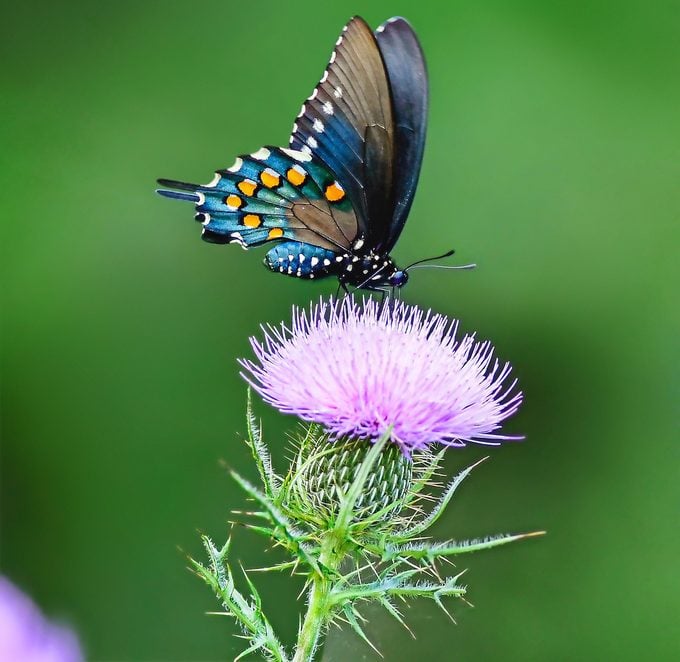
Every time I steam an artichoke for supper, I think about butterflies. Our fluttery friends can’t resist thistle flowers. And an artichoke is nothing but a giant thistle. I never even realized I was eating a flower bud until I saw an artichoke in full bloom. The bold, spiny-leafed plant, as tall as me, was a real standout among the softer, mounded perennials. But what really made me drool were all of the butterflies dancing all around the fuzzy flower.
Until I saw that plant, I’d been patting myself on the back for attracting butterflies, but suddenly the dozen or so butterflies on my new patch of purple coneflowers and colorful zinnias didn’t seem as impressive.
My neighbor’s single artichoke plant was surrounded by more butterflies than I’d seen all summer. Monarchs, hairstreaks, painted ladies and other delicate butterflies battled for perching rights on the fat, fuzzy flowers.
Do Butterflies Like Daisies?
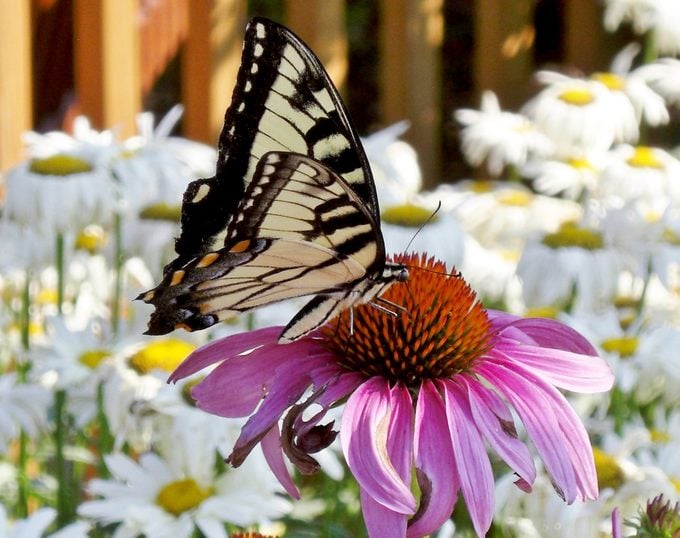
Although you’d never guess at first glance, those artichoke blossoms, and nearly all other fuzzy flower varieties that are great for attracting butterflies, are actually daisies—members of the same composite family, Asteraceae, as are my coneflowers and zinnias.
Butterflies love daisies and related flowers, because the center “eye” is an all-you-can-eat meal of tiny florets. Instead of flying from flower to flower, a nectar seeker can just dip its proboscis into one floret after another. But fuzzy flowers are daisies with a difference.

These flowers are packed from edge to edge with thin, soft, tubular florets. Down in those fuzzy flower tubes is sweet nectar, and a butterfly’s long proboscis is tailor-made for extracting it. It all adds up to easy eating, and butterflies respond like magic.
Psst—here’s how to plant a caterpillar cafe in your butterfly garden.
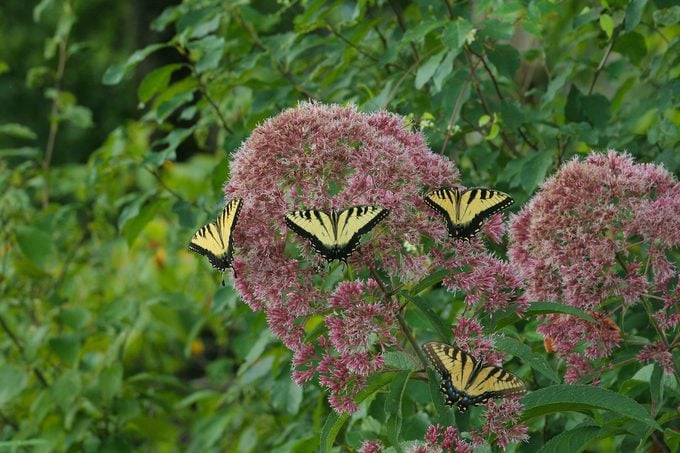
If you, too, want to revel in butterflies—and who doesn’t?—all you have to do is think fuzzy flowers to tickle their fancy. If given the chance, the butterflies in your backyard often prefer fuzzy-centered blooms . There are ample blooms in each fuzzy flower head for them to feed at.
Most fuzzy flowers bloom from summer into fall, when butterfly numbers are at their peak. That’s nature’s design—the flowers tempt butterflies in order to get pollinated.
Butterflies’ Fuzzy Flower Favorites
Plant these fuzzy flowers for butterflies in your own garden.
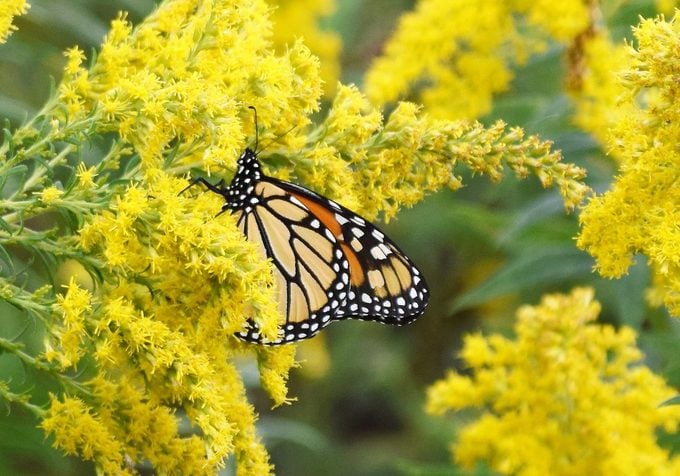
- Ageratum: Light blue to periwinkle; annual
- Anise hyssop (Agastache foeniculum): Light blue to deep blue; tall, upright-branching perennial
- Boneset (Eupatorium perfoliatum): White; perennial
- Caryopteris: Light blue to powder blue; shrub
- Dandelion (Taraxacum officinale): Yellow; perennial
- Gayfeather or Blazing star (Liatris): Pink-purple; perennial
- Goldenrod (Solidago): Yellow; fast-spreading perennial
- Hawkweed (Hieracium): Yellow or red-orange; often grows as a weed but lovely in a casual garden
- Joe Pye weed (Eupatorium purpureum): Mauve or pinkish-purple; bold, large perennial with upright stems of whorled leaves
- Mistflower (Hardy ageratum or Conoclinium coelestinum): Light blue; fast-spreading perennial
- Rabbitbrush (Chrysothamnus): Yellow; drought-tolerant, Western native shrub
- Sedum: Pink to rose, white, yellow; succulent-leaved plants ranging from ground covers to clumping perennials
- Sweet sultan (Centaurea moschata): Yellow, pink, purple, white; annual
- Tassel flower (Emilia coccinea): Vivid red-orange; annual
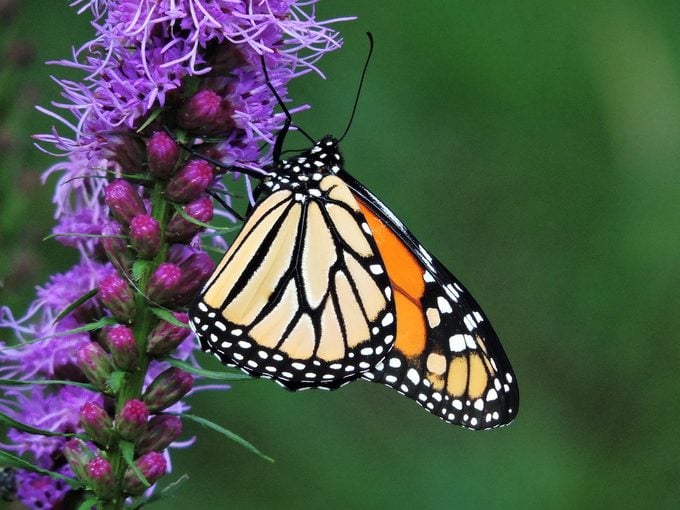
Next, discover the top 10 butterfly host plants to attract pollinators.





















